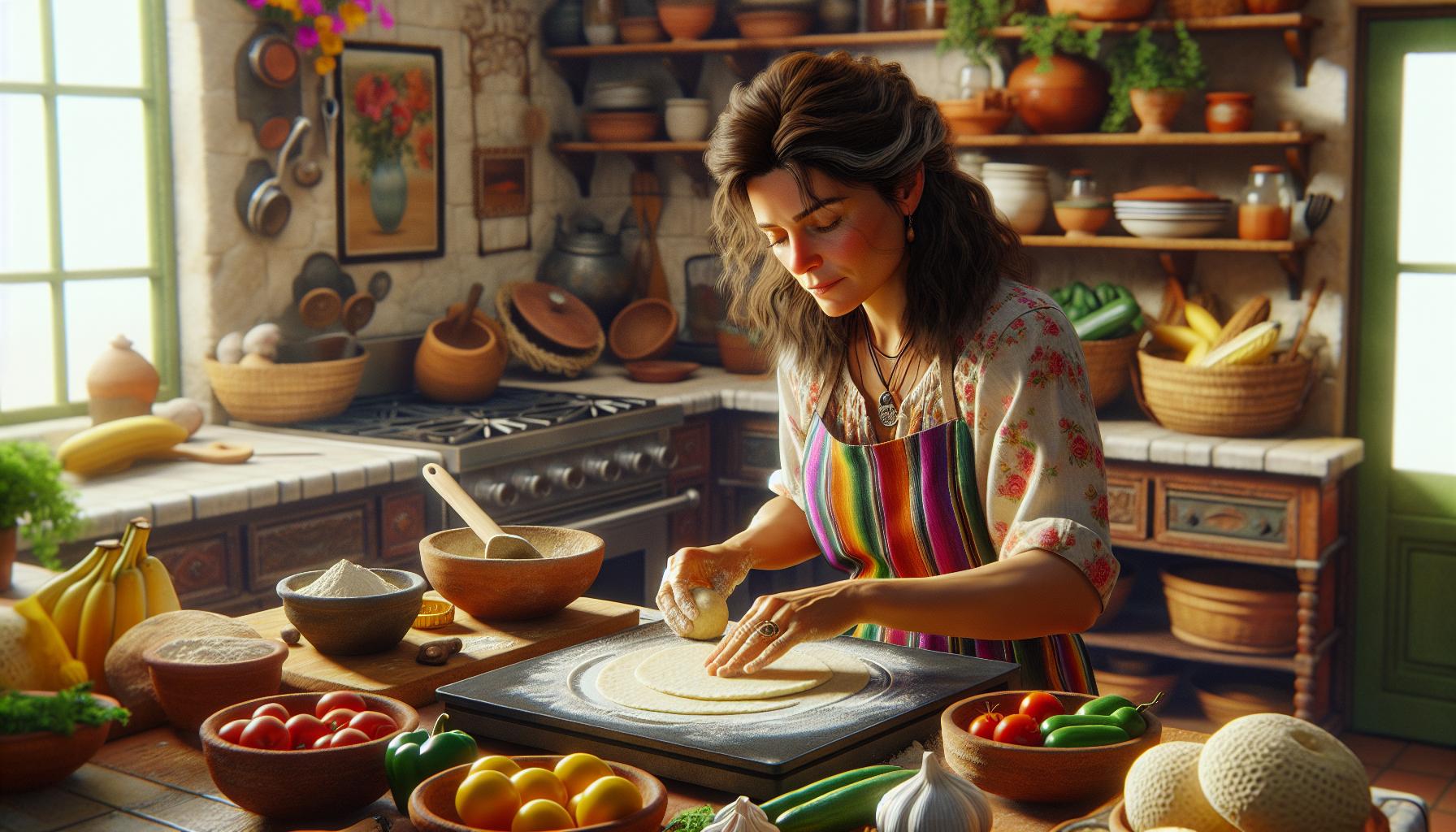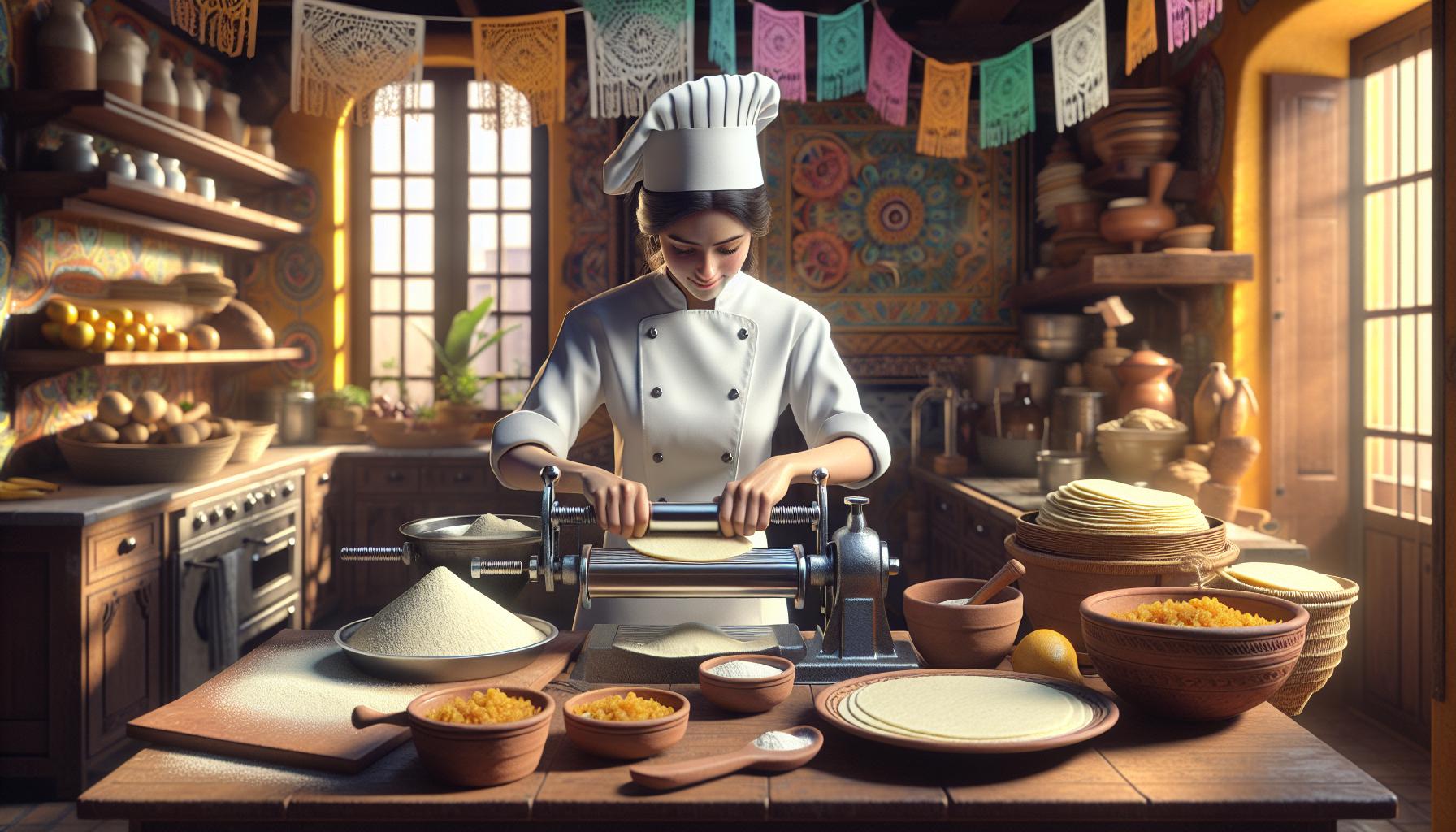Physical Address
304 North Cardinal St.
Dorchester Center, MA 02124

Mexican cuisine stands as a testament to centuries of culinary evolution blending indigenous ingredients with Spanish influences. From the sizzling comals of street vendors to the sophisticated kitchens of high-end restaurants these time-honored cooking techniques have transformed simple ingredients into extraordinary dishes.
At the heart of Mexican cooking lies a blend of ancient methods that bring out complex flavors and textures. Whether it’s the art of nixtamalization for perfect corn tortillas or the slow-roasting techniques that create melt-in-your-mouth barbacoa these practices have stood the test of time. The secret isn’t just in the ingredients – it’s in the masterful techniques that turn humble elements into culinary gold.
Authentic Mexican cuisine relies on specialized tools that enhance flavor extraction methods perfected over generations. These traditional implements create distinct textures textures while preserving time-honored cooking techniques.
A comal, a flat griddle made of cast iron or clay, serves as the cornerstone of Mexican cooking. Its wide, smooth surface heats evenly at 400-450°F (204-232°C), making it ideal for toasting chiles, cooking tortillas or roasting tomatoes. The molcajete, carved from volcanic rock, functions as a mortar and pestle with a rough interior that grinds ingredients into smoother consistencies than electric alternatives. The porous surface of the molcajete releases minerals that enhance salsas, guacamoles or spice pastes with each use.
| Tool | Primary Use | Material |
|---|---|---|
| Comal | Tortilla cooking | Cast iron/clay |
| Molcajete | Grinding spices | Volcanic rock |
| Tortilla press | Flattening masa | Wood/cast iron |
| Molinillo | Frothing chocolate | Carved wood |

Traditional Mexican tortillas require specific techniques to achieve authentic texture, flavor and consistency. The mastery of tortilla-making serves as a foundational skill in Mexican cooking, with distinct methods for corn and flour varieties.
Corn tortillas start with masa harina mixed with warm water at a 1:1 ratio to form a soft, pliable dough. A tortilla press lined with plastic sheets creates uniform thickness, applying firm pressure to flatten 2-inch dough balls into 6-inch rounds. The ideal temperature for cooking corn tortillas ranges between 450-500°F on a preheated comal or cast-iron griddle. Each tortilla cooks for 45 seconds on the first side, 30 seconds on the second side, then 15 final seconds on the first side to create the characteristic puff. Fresh tortillas stay warm in a kitchen towel-lined basket or tortillero for up to 2 hours.
Flour tortillas combine all-purpose flour with salt, baking powder and lard at a ratio of 4:1:0.5:1. The ingredients mix until they form small crumbs, then warm water creates a smooth dough after 8-10 minutes of kneading. The dough rests for 30 minutes, covered at room temperature. Rolling pins extend 2-ounce portions into 8-inch circles using a rotating motion. A hot griddle at 400°F cooks each tortilla for 30-45 seconds per side until light brown spots appear. Stacking the hot tortillas in cloth allows steam to soften them, creating the signature chewy texture.
Mexican cuisine relies heavily on roasting and charring techniques to develop complex flavors and enhance ingredient textures. These methods transform raw ingredients into dishes with deep, smoky characteristics.
Dry-roasting on a comal creates intense flavors through direct heat application. Dried chiles toast for 15-20 seconds per side until they release their oils and become fragrant. Tomatoes roast for 8-10 minutes with frequent turning until their skins blacken and blister. Garlic cloves roast in their papery skins for 5-7 minutes until softened and lightly charred. Onions quarter-sections char for 6-8 minutes until edges blacken. A properly dry-roasted ingredient develops spots of dark coloration while maintaining its structural integrity.
Open flames impart distinctive smoky flavors through direct contact with ingredients. Poblano peppers roast directly over gas burners for 4-5 minutes per side until skins blacken completely. Corn ears grill 12-15 minutes while rotating for even char marks. Onions halve lengthwise and grill 8-10 minutes until edges caramelize. Tomatillos roast 3-4 minutes per side until their husks darken and the flesh softens. These techniques create layers of flavor through controlled charring while maintaining the ingredients’ natural moisture.
| Ingredient | Roasting Time | Technique | Doneness Indicator |
|---|---|---|---|
| Dried Chiles | 15-20 sec/side | Dry-roast | Released oils |
| Tomatoes | 8-10 min | Dry-roast | Blistered skin |
| Poblanos | 4-5 min/side | Open flame | Blackened skin |
| Corn | 12-15 min total | Open flame | Even char marks |
Mexican cuisine employs distinct cooking techniques that transform basic ingredients into complex dishes. Each method serves a specific purpose in flavor development texture creation.
Mexican braising techniques involve cooking meats in aromatic liquids at low temperatures. Birria requires searing goat or beef in chile paste before simmering in broth for 4-6 hours. Traditional cochinita pibil combines pork shoulder with achiote paste citrus juices in banana leaves. The liquid typically fills 2/3 of the cooking vessel creating tender meat intense flavors. Common braising ingredients include:
Mexican frying techniques utilize specific oil temperatures for different dishes. Carnitas cooks pork in lard at 325°F (163°C) for 3 hours until crispy. Chiles rellenos requires oil at 350°F (177°C) for optimal batter crispiness. Essential frying methods include:
Mexican sauces form the backbone of traditional cuisine, incorporating complex layers of flavors through specific preparation techniques. The transformation of raw ingredients into rich, nuanced sauces requires precise methods passed down through generations.
Traditional Mexican salsas incorporate three primary techniques: raw (cruda), roasted (asada), and boiled (cocida). Raw salsas combine fresh ingredients like tomatoes, onions, chiles, cilantro in a molcajete, releasing essential oils through grinding. Roasted salsas develop deep flavors by charring ingredients on a comal until blackened spots appear, typically taking 5-8 minutes per side for tomatoes and 3-4 minutes for chiles. Boiled salsas involve simmering ingredients in water for 10-15 minutes, creating smooth, concentrated flavors. Each method produces distinct texture profiles: raw salsas maintain bright, fresh notes; roasted versions offer smoky depth; boiled variations yield velvety consistency.
Mole preparation begins with toasting dried chiles, nuts, seeds, spices on a comal at medium heat for 2-3 minutes until fragrant. Each ingredient group requires separate toasting: sesame seeds toast in 30 seconds, dried chiles in 45 seconds, whole spices in 1 minute. The ingredients blend in stages, starting with rehydrated chiles, followed by spices, then chocolate or fruits. Traditional mole recipes feature 20-30 ingredients, creating complex flavor profiles through layering. Grinding occurs in specific sequences: chiles first, followed by nuts, then spices, ensuring proper incorporation. The final paste cooks in stock for 2-3 hours, stirring every 15 minutes until it reaches the desired thickness indicated by a spoon leaving a clear path when drawn through the sauce.
Mexican cuisine relies on precise seasoning techniques to create complex flavor profiles. The mastery of spice preparation distinguishes authentic Mexican dishes from their interpretations.
Traditional Mexican spice preparation starts with dry-toasting whole spices in a comal or heavy-bottomed skillet at medium heat for 2-3 minutes. Cumin seeds release their oils at 350°F, while coriander seeds become fragrant at 325°F. A molcajete grinds toasted spices into fine powders, preserving volatile oils that contain essential flavors. Common spice combinations include:
Mexican cooking creates depth through strategic seasoning layers. Base aromatics (onions + garlic) cook for 5-7 minutes until translucent. Dried herbs enter next, followed by ground spices 30 seconds later. Fresh herbs join during the final cooking stage. Essential layering combinations include:
Specific timing between layers allows each ingredient to release optimal flavors without burning or becoming bitter.
Mexican cooking techniques represent a sophisticated culinary system that’s been refined over centuries. From the precise art of tortilla-making to the complex preparation of moles these methods transform simple ingredients into extraordinary dishes. The careful selection of specialized tools combined with time-honored techniques like nixtamalization roasting and sauce-making creates the authentic flavors that define this beloved cuisine.
Anyone aspiring to master Mexican cooking must understand that it’s not just about following recipes – it’s about embracing these fundamental techniques that bring out the best in each ingredient. These methods passed down through generations continue to shape one of the world’s most diverse and flavorful culinary traditions.